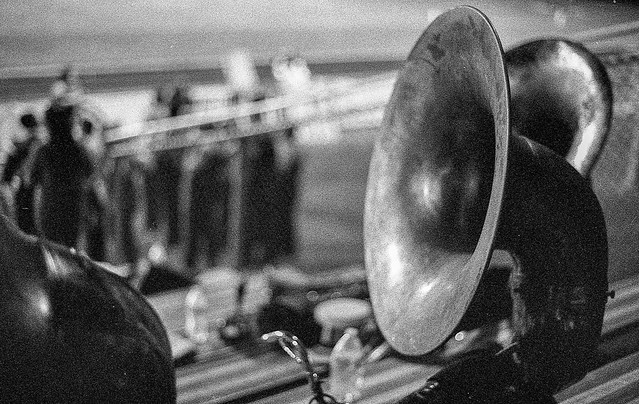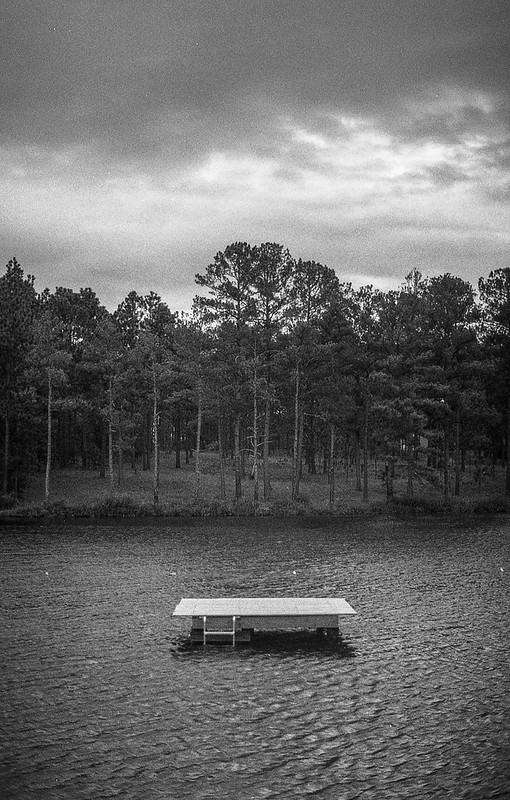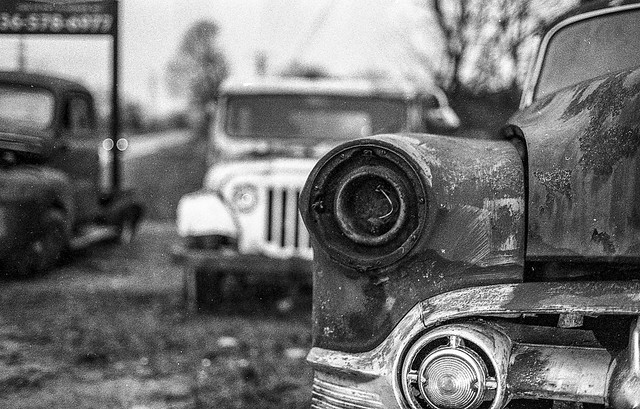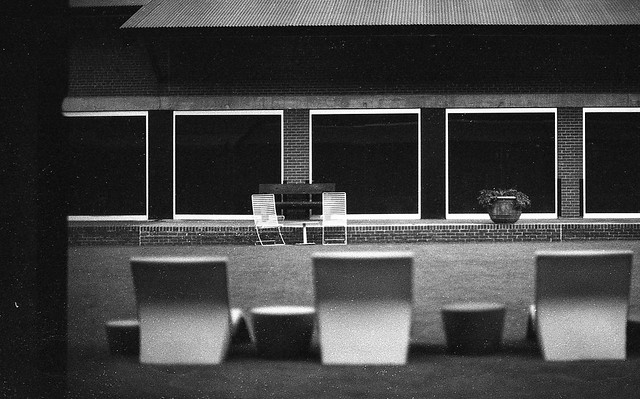On November 1, 2018 back when I was a KEH contributor a First Time Developer with Cinestill Df96 Monobath post of mine went up. I have developed many B&W rolls of film since so I thought I would repost it with updates.
If like me you have been wanting to start developing your own film, but would benefit from a simplified process to begin with Cinestill has you covered. At least that is what they promise. Did they succeed?
Love film photography. But had initially outsourced the development/scanning process to my local camera shop. After some time, I wanted to take more control and save some money. Started off with scanning negatives myself and saved myself about $10 a roll. This left developing film (black and white film anyway). What held me up?
The regular development method seemed like a lot of steps for someone trying it out for the first time. No one step was that complex, but combined start to finish it seemed like a lot to take on all at once for the first time.
The first part I had practiced quite a bit. All with eyes closed and then in a light proof bag:
- Open film canister.
- Load film on to reel
- Insert reel into and close tank
But the next part caused hesitation.
- Measure and warm the chemicals.
- Measure and Warm Developer Bath
- Timed agitation as instructed
- Measure and Warm Stop Bath
- Timed agitation as instructed
- Measure and Warm Fixer Bath
- Timed agitation as instructed
- Washing
- Drying
To the seasoned film developer this is fine. But add the steps above and this all seemed a bit overwhelming to me for a first time run. Here is where Cinestill steps in. The promised new workflow:
- Measure and bring the Cinestill Df96 Monobath to the proper temperature
- Timed agitation as instructed
- Washing
- Drying
I am realistic. I was not expecting this process to be superior to or would even match the established multi bath process. Good enough was the goal. How good would determine if this would be a stepping stone to the multi stage process or my preferred process.
How did the processing go?
I am glad to report that the process was a success. The result was developed negatives. Will add my shopping list below if you are interested in giving it a try.
Notes:
Practice. Practice. Practice. Eyes closed then in the bag practice opening the film canister, loading the film onto the reels, and inserting the reel into the tank. More than anything else these were the largest risk points.
Reading is fundamental. There are instructions on the bottle, and on the web page, but much more thorough downloadable instructions are available on that same page. These PDF instructions were especially crucial for my choice of film Kodak TMax P3200.
Youtube is your friend. Great walk throughs were available for loading film on the reels and developing film.
Much more economical. A bottle of Df96 is just under $20 and if used within a month of opening many rolls can be developed (adjustment in development time by an additional 15 seconds for each roll). Development alone at my local shop is around $10. So past 2 rolls of film, the monobath pays for itself.
Takes much less time. While machine developed color film has a one day turnaround B&W has a week or more waiting time at my local shop. With monobath you can develop at home anytime you like. Finish a roll during the day and develop it that night. Finish a roll on a Saturday afternoon and develop that night. No need to wait until the next Tuesday when the shop opens to turn it in. Nice.
What about after the scan? None of this matters if the resulting image is unacceptable. Happy to report that the resulting images were wonderful. This roll of Kodak TMax P3200 delivered every bit of the grainy, but at the same time sharp wonderfulness I was expecting. A couple of sample shots below and here is a link to more shots.
Shopping list for those starting from scratch like I did:
- Cinestill Df96
- Thermometer
- Any will do that are long enough for the bottle.
- Development Tank
- Many good ones, but I chose this one since it can hold up to two rolls of 35mm film and can also be used for 120 film.
- Changing Bag
- Scissors
- Any will do. Better if not sharp nosed since it goes in the changing bag.
- Bottle Opener
- Used one on a bottle opener around the house.
- Measuring Cup
- Any will do. This seems fine.
- Funnel
- Any will do.
- Plastic tub large enough to hold the bottle of Df96
- I used one I found in the kitchen
- Clips to hang film to dry
- I have since switched to standard issue extra large binder clips. They work with 120 and 35mm film.
Ok, that concludes the original post with a few minor edits. Here I will add some sample images over the years since I wrote this first post and some additional thoughts.
Additional thoughts.
To cut to the chase I never made the switch to more conventional developers. I was perfectly happy with things as is. There were a few films I came across that did not play well. But none so bad so as to discourage me from trying them anyway.
Two examples are Fuji Acros 100 and Agfa APX 400. They are not listed on the approved film list, but I have tried both to mixed results. Agfa APX 400 fared a bit better overall with Acros being a bit cloudy using df96. But there is an easy fix. Pay more attention to the approved list.
But most films I have tried work just fine even if they are not listed. One required a bit of adjustment. For example CatLABS X Film 320 is rated at ISO 200, but that netted a dark result so I took a chance and shot it at ISO 100. This netted very good results and it is one of my favorite films at the moment.
But if you stay to the approved list you are good to go. And I normally develop upwards of 13 or more rolls per $20 bottle. I would have to pay my local camera shop $130 plus for the same service. I will stop myself here.
I perfectly understand if one chooses to continue having others develop their film for them. But if you are curious about film development I highly recommend that you give it a try.
Happy capturing.
-ELW































22 Replies to “Developing with Cinestill Df96 Monobath: A KEH Repost and Update”
Comments are closed.